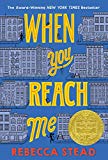
Aaron Mead found that, "the novel addresses the question of how to hold on to old friendships without stifling them, and it insightfully brings out the stabilizing effect that new friendships can have in the effort to preserve or reclaim old ones". He noted that the novel deeply helps children in middle school. Crewdson opined that the book deals with the "intricacies of friendship".
This theme of friendship is explored when Sal abandons his friendship with Miranda after he is hit by Marcus. Elli Housden of The Courier-Mail found that Miranda is forced to deal with the fact that Sal seemingly abandons their friendship and ignores her for no apparent reason. Scattergood considered the novel an "ordinary friendship story" with Sal ignoring Miranda to find other friends. Julie Long from Reading Time noted how the incident forces Miranda to find new friends and become more active in school, where she starts learning the dynamics of that environment.
Mead noted that "the book builds toward second chances for Miranda's mother—both vocationally and relationally." As the novel progresses, Miranda gives second chances to Julia, a girl whom Miranda initially hates, and Alice, a girl who always needs to use the bathroom but never does. Miranda previously considered Julia "a competitor for Annemarie's affection, and Aliceas the weird kid who waited too long to go to the bathroom". By the end of the book, she finds Julia to be Annemarie's friend and discovers that Alice is an insecure girl.
Stead finds that kids today are much less independent since her childhood. She wrote, "[F]rom age nine, my friends and I were on the streets, walking home, going to each other's houses, going to the store. I really wanted to write about that: the independence that's a little bit scary but also a really positive thing in a lot of ways. And I'm not sure that most kids have that today". Throughout the novel, Miranda and her friends often walk around town without any adults. They are even found working in a sandwich store at lunch and walking home from school while trying to avoid the laughing man. While writing the novel, Stead hoped to show her sons the time period in which she lived, "send[ing] them on a little time-travel journey of their own". Laura Miller of The New Yorker found that this lack of independence in today's youth is mainly due to the fact that kids now grow up with adults constantly watching them. Miller noted how, despite the lower crime rate in current times, the "characters, middle-class middle school students, routinely walk around the Upper West Side by themselves, a rare freedom in today's city."
Julianna Helt from the Pittsburgh Post-Gazette found that time travel forms a central theme as Miranda constantly wonders how time travel could be possible. In When You Reach Me , Marcus helps Miranda realize that the three old ladies from A Wrinkle in Time lied to Meg by promising they would return five minutes before they left. Marcus explains:
"So the garden is where they appear when they get home at the end of the book. Remember? They land in the broccoli. So if they had gotten home five minutes before they left, like those ladies promised they would, then they would have seen themselves get back. Before they did".
Roger Sutton from Horn Magazine felt that the moment Marcus explains this flaw to Miranda is the first exchange that shows the novel to be complicated and mysterious. Quattlebaum noted, "The story's structure– an expert interweaving of past, present and future – brilliantly contradicts Miranda's commonsensical belief that the end can't happen before the middle." Stead explained her view of time travel in her novel, where going back in time is fulfilling the future, rather than changing it. She hoped to make the time travel element logical to show that "Miranda wasn't struggling to understand the seeming randomness and infinity of the universe, but learning that her world has value and that people do care about her".
Already have an account? Log In Now